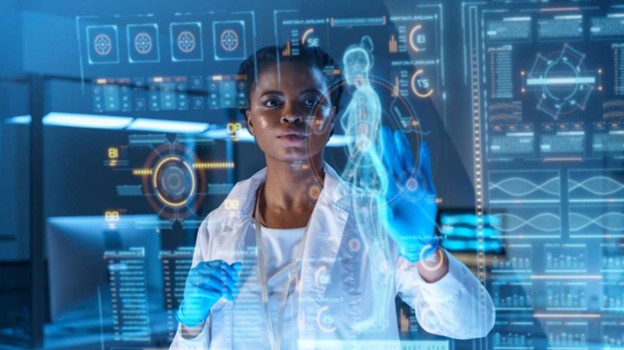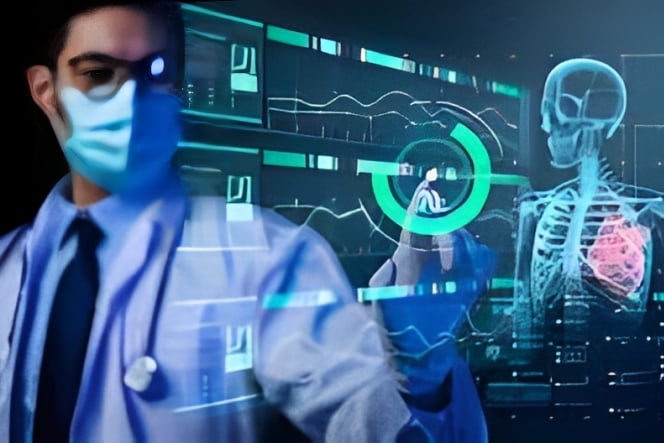AI in X-ray Technology: Revolutionizing Diagnostics and Imaging
In the ever-evolving world of healthcare and technology, artificial intelligence (AI) has made significant strides, transforming industries across the board. One of the most profound areas where AI is making a major impact is in X-ray technology. Traditionally, X-rays have been a vital tool for doctors to peer inside the human body, but advancements in AI are taking this diagnostic tool to new heights. By enhancing the capabilities of X-ray machines, AI is not only improving accuracy but also saving time and lives. In this post, we’ll explore how AI is reshaping X-ray technology and revolutionizing diagnostics.
3/26/20254 min read


The Basics of X-ray Technology
X-rays have been used for over a century in medicine to diagnose broken bones, identify infections, and detect diseases like pneumonia or even cancer. They work by passing a controlled amount of radiation through the body, capturing images on film or digital sensors to reveal what’s happening inside. While incredibly useful, interpreting X-ray images can sometimes be challenging, especially when subtle issues arise that may be missed by the human eye.
Enter AI: The Supercharged Assistant
Imagine having a highly trained assistant who never gets tired, can analyze thousands of images in seconds, and never misses a tiny detail. This is essentially what AI brings to the table when it’s integrated with X-ray technology. Artificial intelligence, particularly deep learning, helps machines to "see" and understand images much like the human brain does, but with much greater efficiency and accuracy.
How AI Improves X-ray Diagnostics
Enhanced Image Analysis
AI algorithms are trained to detect minute details in X-ray images, allowing them to spot potential issues that human radiologists might miss. These algorithms can analyze the images with remarkable speed, which means a radiologist can receive alerts on areas of concern, helping them to prioritize cases that require immediate attention. For example, AI can flag subtle signs of lung cancer, fractures, or bone infections that might otherwise go unnoticed in a traditional X-ray review.Faster and More Accurate Results
One of the key advantages of AI in X-ray technology is speed. AI-powered systems can process and analyze images far faster than a human could. This can drastically reduce wait times for patients, leading to quicker diagnoses and, consequently, faster treatment. For hospitals or clinics with high patient volumes, this efficiency is especially valuable.Consistency and Precision
Unlike humans, AI doesn’t suffer from fatigue, meaning its performance remains consistent, even after examining hundreds of images in a single day. This consistency helps ensure that diagnoses are made with high levels of accuracy, regardless of the time of day or the volume of work. Additionally, AI can be trained on a variety of datasets, allowing it to handle a wide range of conditions, from common illnesses to rare diseases.Reducing Human Error
Human error is an inevitable part of any field, and radiology is no exception. A radiologist might misinterpret an X-ray due to exhaustion or oversight, leading to delayed diagnoses or incorrect treatments. AI significantly reduces the risk of such errors by providing a second layer of analysis that flags potential issues, helping to ensure the diagnosis is as accurate as possible.Assisting in Early Detection
Early detection of diseases like cancer, heart conditions, and infections is critical to improving patient outcomes. AI’s ability to quickly and accurately analyze X-ray images means that it can help detect conditions in their earliest stages, even before symptoms appear. This early detection can make the difference between successful treatment and missed opportunities for intervention.
AI in X-rays: Real-World Applications
Cancer Detection: AI is particularly useful in the early detection of lung cancer. Deep learning models trained on vast datasets of X-ray images can help identify signs of tumors or unusual growths, sometimes at a stage when they are not yet visible to the naked eye. By aiding in early detection, AI increases the chances of successful treatment.
Orthopedic Imaging: AI algorithms can assist orthopedic surgeons in analyzing X-ray images of bones and joints to detect fractures, arthritis, or signs of bone degeneration. It can also help in tracking healing progress over time, ensuring that the bones are mending properly.
Cardiovascular Health: In the case of cardiovascular diseases, AI can assist in evaluating chest X-rays to identify enlarged hearts, fluid buildup in the lungs, and other signs of heart failure or respiratory distress.
Dental X-rays: In dentistry, AI is also making strides, helping dentists analyze dental X-rays for cavities, tooth decay, and other oral health conditions more efficiently. AI helps to pinpoint potential problem areas, allowing for quicker and more precise treatment.
Challenges and the Future of AI in X-ray Technology
While AI has already shown immense promise, it’s important to recognize that the technology still has some challenges to overcome. One of the major hurdles is ensuring that AI algorithms are trained on diverse, high-quality datasets. This ensures the systems can work accurately across different populations and medical conditions.
Furthermore, AI should be seen as a tool to assist medical professionals, not replace them. Radiologists and doctors are essential in interpreting the results and making final treatment decisions based on the data. AI acts as an assistant to help speed up the diagnostic process and reduce the risk of human error.
Looking ahead, as AI continues to evolve, it’s likely we will see even more advanced applications. The integration of AI with other technologies like 3D imaging, virtual reality, and even robotic surgery could further enhance the diagnostic and treatment process.


Reference Website Links:
American College of Radiology (ACR) - AI in Radiology
Radiological Society of North America (RSNA) - AI in Medical Imaging
National Institutes of Health (NIH) - AI for Medical Imaging
Nature - Artificial Intelligence in Medical Imaging
AI in Healthcare (AIH) - Impact of AI on Radiology
